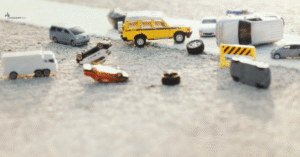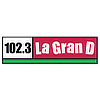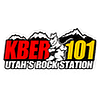9 Most Common Causes of Car Accidents
Crashing rarely happens as a result of a single mistake. It is most likely that drivers get into accidents when they are tired, rushed, distracted, or don’t follow the rules.
In Utah, we see the same patterns again and again at lights, in merge lanes, during storms, and near road work. This guide explains the top reasons crashes happen and how to avoid them.
It uses plain language and facts you can trust. We mention the common causes of car accidents only to help you spot risks sooner and protect your family. Read with a simple goal in mind: get home safe, every time.
Key Points You Should Know
- Slow for weather and work zones
- Never drive after drinking or drugs
- Rest before long or late drives
- Yield even when you feel rushed
- Stop fully and scan both directions
- Signal and change lanes one at a time
- Watch lights and signs at intersections
- Report dangerous potholes or debris
#1 – Distracted Driving
Looking away for even two seconds at 55 mph is like driving blind for half a football field. Phones are the top issue, but eating, adjusting the screen, and turning to talk can also split your focus.
What do the numbers show?
National data links distraction to thousands of deaths each year. In 2023, at least 3,275 people were killed in distraction-affected crashes across the United States. That is 8% of all road deaths that year. (Source: CrashStatsNHTSA)
Nearly half of Utah crashes happen at intersections, where a quick glance at a text can hide a pedestrian or a green light turning yellow.
A risk-reduction strategy
- Turn off your phone before shifting into drive.
- If a call or text cannot wait, pull into a lot.
- Keep snacks, pets, and loose items secured so they do not demand your attention
#2 – Speeding and Aggressive Driving
Speed cuts your reaction time and pushes crashes from minor to severe. Hard weaving, rapid lane shifts, and road rage stack the risk even more.
What the numbers show
In 2022, there were 12,151 traffic deaths attributed to speeding. It represented 29% of all U.S. traffic fatalities. Teen drivers had the highest share of speeding in deadly crashes.
Utah angles
State data lists speed and “too fast for conditions” among the leading factors in fatal crashes. Slowing five to ten mph often means the difference between a scare and a serious injury.
Lowering your risk
- Leave earlier so you do not feel pushed.
- Match speed to weather, traffic, and road work.
- Let aggressive drivers pass. Your goal is getting home.
#3 – Drunk or Drug-Impaired Driving
The effects of alcohol and drugs are to slow thinking, blur vision, and delay braking. Even “just a couple” can change judgment.
Utah crash reports note impairment in many fatal crashes. Plan a sober ride or stay where you are. No ride share fee will ever match the cost of a crash.
How to lower your risk?
- Set a sober driver before the first drink.
- Use a ride share or taxi anytime you feel buzzed.
- Remember some medications affect driving. Read labels.
#4 – Drowsy Driving
Sleep loss slows reaction time and causes micro-sleeps that last a few seconds. On a freeway that is long enough to miss a brake light ahead.
What the numbers show
Analysis of federal crash data estimates that about 17.6% of fatal crashes from 2017 to 2021 involved a drowsy driver. The true number may be higher because tiredness is hard to measure after a crash. (Source: AAA Foundation for Traffic Safety)
Utah angles
In the middle of the night or after a long shift, long stretches of I-15 and I-80 are a convenient place to zone out. You should stop drifting in your lane when you notice yourself doing so.
Here are some tips for reducing your risk
- Sleep seven to nine hours before long trips.
- Switch drivers or pull off for a short nap when you yawn often.
#5 – Failure to Yield the Right of Way
Do not make any quick left turns, drive through any stops or in traffic before looking, because you may have a head-on collision with cars going from the opposite side or bikes and pedestrians that are driving legally.
How to lower your risk
- Make a full stop and count one-two before moving.
- For unprotected lefts, do not go on the last second of yellow.
- Watch for pedestrians finishing a crosswalk on your green.
#6 – Running Red Lights and Stop Signs
Running a light or sign turns the intersection into a high-speed crossing. The person you hit gets little warning.
In 2023, 1,086 people were killed in crashes that involved red light running in the United States. More than 136,000 people were injured. Many victims were people in other cars, bicyclists, or pedestrians.
With 47% of Utah crashes at intersections, full stops and patient right turns make a real difference. Do not race the yellow. Scan both ways before entering on green.
Taking steps to reduce your risk
- Look to the left, right, and then left again.
- Cover the brake when entering a busy intersection.
- Expect others to run the light and be ready.
#7 – Unsafe Lane Changes and Improper Merges
A blind-spot miss, a last-second dash to an exit, or merging at the wrong speed can lead to sideswipes and chain-reaction crashes.
Utah lists unsafe lane change among the top driver factors in all crashes. It is common for drivers to fail to keep in the correct lane, which leads to fatal crashes.
Risk-reduction tips
- First signal, then check mirrors and blind spots.
- Move one lane at a time.
- Match freeway speed in the ramp, then merge with space.
- If you miss a turn, go to the next exit instead of cutting across.
#8 – Following Too Closely, Also Called Tailgating
You cannot stop in time if the car ahead brakes hard. Tailgating also triggers road rage and panic swerves.
“Followed too closely” was the number one driver factor in all Utah crashes in 2023. Likewise, Utah law requires a reasonable and prudent following distance based on speed and traffic.
Risk-reduction tips
- Use the three-second rule in good weather.
- Double the gap in rain or snow.
- Leave room at lights so you can steer around a stalled car.
#9 – Weather-Related Crashes
Tyres lose grip quickly in the wet, snow, ice and fog can conceal danger. Oil on the road rises to the surface and slicks up even during light drizzle. Weather-related crashes: Weather factors into an average of 12 percent of all crashes nationally, killing thousands and injuring hundreds of thousands each year. the second paragraph of Surrender to Utah WintersThere are long runs of snow and ice in the heart of winter, followed by sudden —
Tyres lose grip quickly in the wet, snow, ice and fog can conceal danger. Oil on the road rises to the surface and slicks up even during light drizzle.
Weather-related crashes: Weather factors into an average of 12 percent of all crashes nationally, killing thousands and injuring hundreds of thousands each year. There are long runs of snow and ice in the heart of winter, followed by sudden.
How to lower your risk
- Slow down, turn on headlights, and leave extra space.
- Clear all windows and mirrors before you drive.
- If visibility drops, pull off at the next safe exit rather than stopping in a live lane.
Hire a Car Accident Lawyer To Compensate Your Loss
Getting medical care and car repairs is hard enough. Dealing with claims, forms, and low first offers makes it worse. A local car accident lawyer handles the calls, builds the proof, and keeps you on track with deadlines. In Utah, that includes gathering the crash report, medical bills, photos, and witness notes while you focus on healing. If an insurer is slow to respond, your lawyer keeps the file moving. You get clear answers and a plan, step by step.
How does a car accident lawyer help your claim?
An experienced car accident lawyer like Chris Cockayne at Cockayne Law can measure the full loss, not just the first bill. That includes time off work, future treatment, and pain from lasting injuries. They also understand state rules. Utah is a no-fault state for car insurance, with personal injury protection that pays early medical bills. Serious injuries can step outside no-fault if bills top the threshold, allowing a claim against the at-fault driver.
In drunk-driving cases, Utah’s .05 BAC limit supports strong proof of impairment. A local attorney will use records, experts, and photos to show what really happened and protect your rights. If you want a free review, Cockayne Law helps crash victims across Utah and can explain your best next steps.
FAQs
How do Utah’s no-fault rules affect my claim?
The State of Utah mandates that all riders must have personal injury protection which automatically pays your initial (immediate) medical bills. If your medical bills are over the threshold or you have some more serious injuries that occur, you can go after the at-fault driver for more.
What if the other driver was speeding or ran a red light?
Their violation helps prove fault. Speeding and red light running cause many severe crashes. Gather photos, video, and witness notes. A lawyer can request camera footage and traffic data to back your case.
How does Utah handle drunk driving in crash cases?
Utah’s legal limit is .05 BAC for standard drivers, lower than other states. An impaired driver’s test results, field tests, or guilty plea can support your injury claim for damages.
Why are intersections so dangerous in Utah?
Almost 50 percent of Utah crashes occur at intersections and some of the leading causes are left turns, red light running, or failure to yield. Currently, it slows down and stops after it turns green to scan for late cross-traffic.
Should I leave enough space to avoid tailgating?
If the weather is good, leave a three-second gap, and if it is raining or snowing, leave more time. Utah law requires a reasonable and prudent following distance. Doubling the gap in bad weather is a safe rule.
Do phones really cause that many crashes?
Yes. Distraction is linked to thousands of deaths nationwide each year. A quick glance at a text can hide a stop sign or a person in a crosswalk. Use Do Not Disturb and pull off for urgent calls.
Are work zones a big crash risk in Utah?
They can be. Utah recorded more than a thousand work zone crashes in a recent year. Slow down when you see orange signs, merge early, and follow the posted speeds.
Where can I read more Utah crash facts?
The Utah Highway Safety Office publishes yearly crash fact sheets and summaries. These reports list top crash factors, times, and locations and are updated each year.









